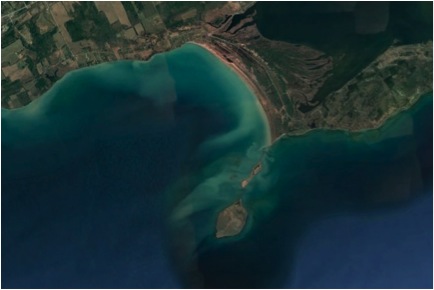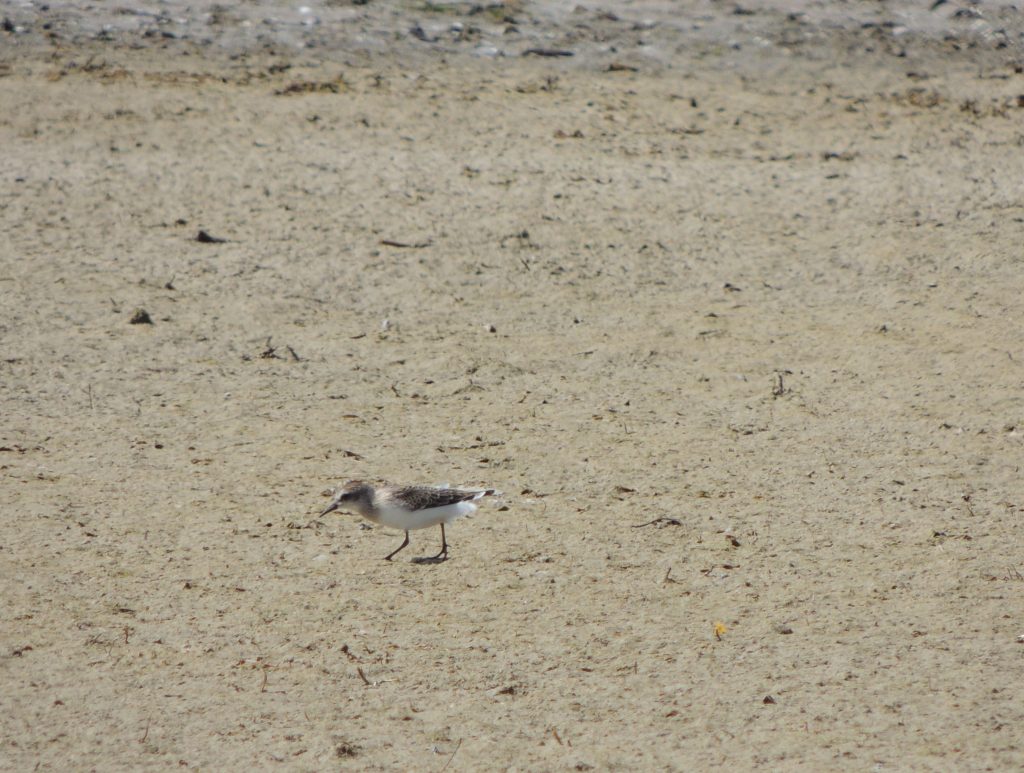August 31st. 2017. Presqu’ile Provincial Park, Brighton, ON. This is a dip back into my archives to a story written three and a bit moths ago but which was set aside for one reason or another.

It’s a long drive east to Presqu’ile Provincial Park, but the park is a bit legendary among birders, the day was open to ideas and I’d heard that there were some good shorebirds there. Too far to go chasing birds in the normal run of things but the idea just popped into my head, so I went.
Entering the park, paying the admission fee and accepting a handful of park-users’ information I was directed to the birders’ beach. Well, now there’s a nice idea, to think that some beaches could be Frisbee-free. It turned out that the birders’ beach wouldn’t have held much appeal to normal people anyway. The waters of Lake Ontario had inundated it through the spring and early summer and its sands were still soggy, offensively smelly and alive with flies and other invertebrates; conditions more appealing to shorebirds than sun worshipers.
As far as shorebirds go it was rather unexciting, a couple of flocks of Semipalmated and Least Sandpipers skittered at the water’s edge. Every now and then they’d take off as if in panic, head out over the lake but quickly circle back to the beach a hundred meters along from where they’d started. It was a good opportunity to study and compare the two very much alike species but well, hardly worth the long drive.
Things looked up when I noticed a small group of new birds arrive, somehow a bit different, perhaps a bit larger, or maybe it was just the way they flew. I found them again later among shoreline-feeding Semipalmated Sandpipers, very similar but yes, a little larger and subtly different. My mind worked over the options and isolated Baird’s Sandpipers as most likely.
Distinguishing between lookalikes can be very challenging and if done incorrectly can be career-ending. Think of the poor souls who sailed back to Europe with a ship loaded with supposed gold which turned out to be chalcopyrite. (Superficially they look alike but an experienced field geologist told me the geologists’ maxim is, if you think it’s gold – it’s not!) Practice and experience will never go out of style.
Baird’s Sandpipers are a generally more western species and while most adults migrate south down the middle of the continent the young of the year are less disciplined and a few show up around Lake Ontario at this time of year, although they’re still not common.
I left Presqu’ile satisfied that I’d finally seen the place and understood its attraction, happy to have picked out the Baird’s Sandpipers among Semipalmated Sandpipers, Lesser Yellowlegs, Semipalmated Plovers and not much else. Baird’s Sandpiper, here’s one– Bird of the Day.